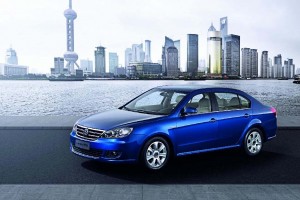
VW is well established in China's Pacific Crescent - but now it wants to target emerging regions of the country.
Pushing to maintain its long-time lead in what is now the world’s largest market, Volkswagen is looking to boost production capacity while targeting regions of China only beginning to feel the benefits of the country’s rapid economic boom.
The new VW plant in western Xinjiang Province is home to a number of so-called Level 3, 4 and 5 cities that each have more than a million residents — but which have yet to experience the huge demand for cars experienced by Pacific Coast cities like Beijing and Shanghai.
“There is today already a clear trend westward, while growth momentum in the east of the country has to some extent returned to normal. Volkswagen has taken this trend into consideration by building the production plant in Urumqi,” the provincial capital, said Jochem Heizmann, chief executive officer and president of Volkswagen Group China.
The new assembly plant, VW’s 102nd worldwide, will produce a relatively modest 50,000 vehicles annually, at least as currently configured. In itself, that isn’t enough to move the needle much when considering VW sold more than 2.81 million vehicles in China last year. But it begins the process of opening up a region, which, until now, has been relatively untouched by China’s sweeping automotive revolution.
That’s becoming increasingly critical as government leaders implement restrictions in cities like Beijing and Shanghai to combat worsening smog and traffic problems. But it is also essential for VW, in particular, as it battles with rival General Motors for leadership in China, now the world’s largest automotive market. The Asian nation is now GM’s largest national market and it is on pace to beat last year’s record of 2.8 million sales by as much as 10% for all of 2013.
(Battling to make up lost ground, Daimler redoubling efforts in China. Click Here for the latest news.)
The new Urumqi plant is part of a push to boost VW’s Chinese capacity to 4 million. At least initially, it will operate as a knock-down assembly facility, completing production of partially assembled vehicles shipped in from VW’s more established facilities. But it will have its own paint and body shops which could allow for full assembly at a later date.
“Our vehicle plant in Urumqi provides sustainable impetus for economic and social development in the region and allows us to benefit from expected growth in Western China,” said CEO Heizmann.
The executive stressed that central and western provinces could become the big growth engines in the coming years for China, but it also poses some risk. Xinjiang province – sometimes called China’s “Wild West” – has been the site of clashes in recent years between the Chinese central government and Muslim tribesman. And, as in Tibet, there has been some resistance to increased investment and industrialization.
(Entering Chinese market a lot tougher than expected, Tesla discovers. Click Here for the full story.)
VW was one of the first makers to enter what was, in 1984, a marginal market for automobiles. It operates a network of facilities producing models under various group brands, including Volkswagen, Skoda and Audi. Another VW plant targeting emerging regions of China will open in Changsha in late 2015.
Paul A. Eisenstein contributed to this report.

With all the money China is removing from the U.S. with the outrageous importation of Chinese crap, it’s no wonder China’s economics and standard of living is improving while the U.S. is sinking. This ain’t rocket science folks. Exporting U.S. jobs and importing Chinese crap is the downfall of the U.S. economy.
While all major car makers are pushing for sales in China, I think that VW pushing for all the sales they can get wordwide including China and their obsession with being $1 is going to bite them in the arse when it’s all said and done.